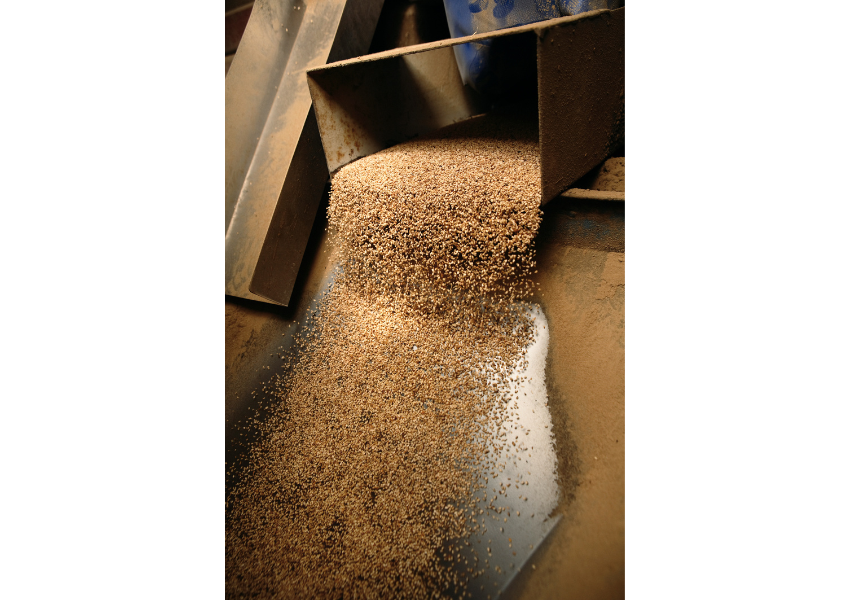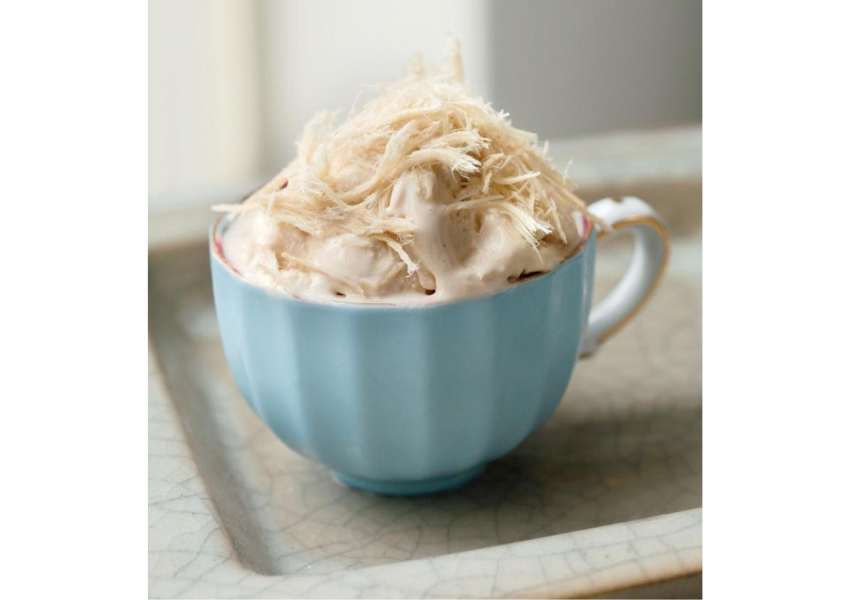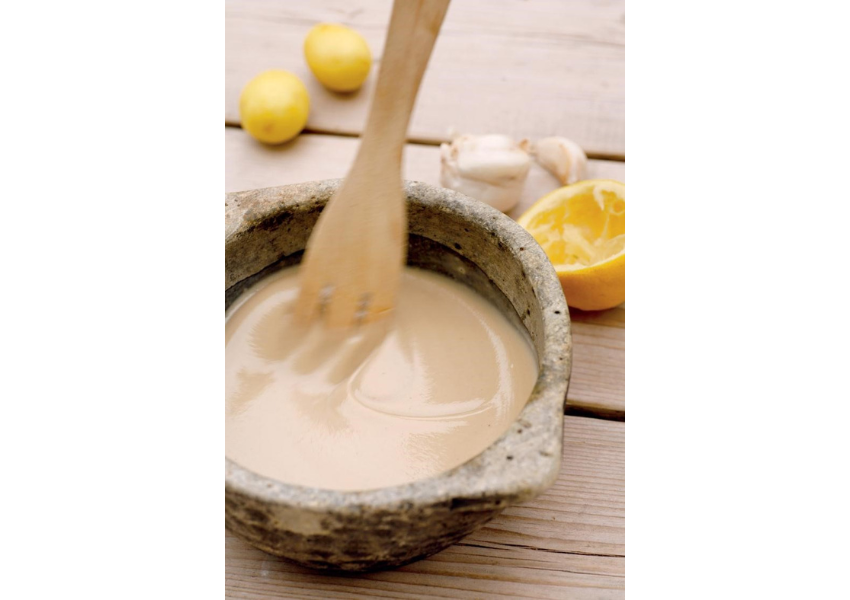Tahini Magic: An Israeli Staple
Better than supermarket tahini spreads, and less than a minute to whisk up
By Janna Gur
Published Apr 12, 2023

I am a tahini freak, and I am not alone. Ask any Israeli cook, professional, or amateur, which pantry items they cannot do without, and I am positive tahini will be at the top of their list (next to the olive oil, good sweet tomatoes, and fresh herbs).
Tahini is the key ingredient in hummus. This fact alone could grant tahini its place of honor in the local food culture, but this is only the tip of the iceberg. Almost everything tastes better with this Middle Eastern staple. We use it to make dips and salad dressings, drizzle it on roasted or fresh vegetables, and transform it into delicious crusts for meat and fish. We even make tahini-based pastries, smoothies, and desserts.

COURTESY QUENTIN BACON
Beetroot carpaccio drizzled with raw tahini
Ready to add tahini to your pantry? Here’s your beginner’s guide to this versatile spread:
Tahini is made from toasted, hulled sesame seeds (tahini or tahina means ground in Arabic). The result is a thick, greyish-brown paste sold in jars or tins. This is what we call in Hebrew tehina golmit – raw (or pure) tahini (as opposed to prepared tahini spreads) – and this is what you should buy or order. Check the back label. It should read 100% sesame seeds, nothing else.
Loaded with nutrients and cholesterol-free, tahini is a hit with health food buffs. Whole tahini, made from unshelled sesame seeds, is even healthier, but the flavor may be too strong for a rooky.
Not all tahinis are born equal. To test the quality, grab a spoon and taste it straight from the jar. The flavor will be quite dominant. It should be nutty (a bit like peanut butter), slightly sweet, and without a trace of bitterness.
Great news: two of my favorite Israeli tahini brands are available in the US and online: Roland and Har Bracha. The latter is produced by Samaritans – a few thousand-strong ethnoreligious groups that originate from the ancient Israelites. It is produced in a small village called Kiryat Luza, near Nablus, considered the tahini world capital.
Once you open a jar of tahini, you may see a layer of oil on top of the paste. This is perfectly normal, just make sure you shake the jar before using it.

COURTESY DANYA WEINER
Tahini ice cream
Take a couple of tablespoons of raw tahini and mix it with a teaspoon of honey. Have a taste…delicious, isn’t it? And reminiscent of sesame halva, one of the most beloved Middle Eastern sweetmeats. Sesame halva is indeed made from raw tahini, and it inspired local chefs to come up with tahini-based sweets. Tahini cookies (aka halva cookies) are the most popular, but there are also tahini pound cakes, tahini ice cream, tahini mousse, and tahini fruit smoothies.

COURTESY FRESH FLAVORS OF ISRAEL
The supermarket shelves brim with prepared tahini spreads, but there is absolutely no reason to buy them, as it takes less than a minute to transform raw tahini into a delicious spread or salad dressing.
Get the Recipe
Ingredients:
1/2 cup of raw tahini
1/3 cup ice water
Freshly squeezed lemon juice
Dash of salt
Directions:
- Pour 1/2 cup of raw tahini into a bowl. Add about 1/3 cup ice water, freshly squeezed lemon juice, and a dash of salt.
- Start mixing (a fork is just fine). It is normal for the paste to turn lumpy and thick.
- Continue mixing and gradually adding water, and in a few seconds, it will miraculously turn shiny and velvety.
- If you want to use it as a dip, keep it thick. If you want to drizzle it over a vegetable salad or grilled veggies, add a bit more water.
Notes
**Fresh garlic goes beautifully with tahini. Add a clove or two (minced), but only if you serve it right away, lest it get too garlicky.

COURTESY DANIEL LAILAH
Fried Cauliflower on a bed of amba tahini
After mastering the simple art of making tahini spread from scratch, you are ready for some creative riffs.
Yogurt Tahini: Follow the method for tahini spread, but use equal parts of tahini, water, and plain yogurt. The result is spectacular – super creamy with a slight tang from the yogurt that goes beautifully with the delicate nuttiness of tahini.
Green Tahini: Add a handful of finely chopped parsley to the prepared tahini spread. Or if you are making tahini in a blender, process everything together: raw tahini, water, lemon juice, salt, garlic, and a handful of parsley leaves.
Asian Tahini: Mix raw tahini with rice vinegar (instead of lemon juice), soy sauce (instead of salt), mirin (or honey), and a drizzle of sesame oil. Add ice water as needed. The result is so yummy you would want to eat it with a spoon. Asian tahini makes a wonderful dressing for crunchy vegetable salads or green salads.
Amba Tahini: Amba is a pungent spicy condiment made from mango, fenugreek, and chili. Originally from India, it arrived in Israel with Iraqi Jewish immigrants. Look for amba powder in Middle Eastern Groceries or online. Follow the directions for the basic tahini spread, but add about 1/2 a teaspoon of amba and a dash of turmeric.
Janna Gur is a Tel Aviv-based cookbook author, journalist, speaker, and culinary expert.
Reflections
In the kitchen
Have you had a chance to work with raw tahini, and what was your experience?
DIY
Did this item make you want to try your hand at making your own tahini spread?
For those of us with hot takes:
When was the first time you heard/tasted tahini and what did you think about it?
Want more?
Get curated JewishArts.org content in your inbox


